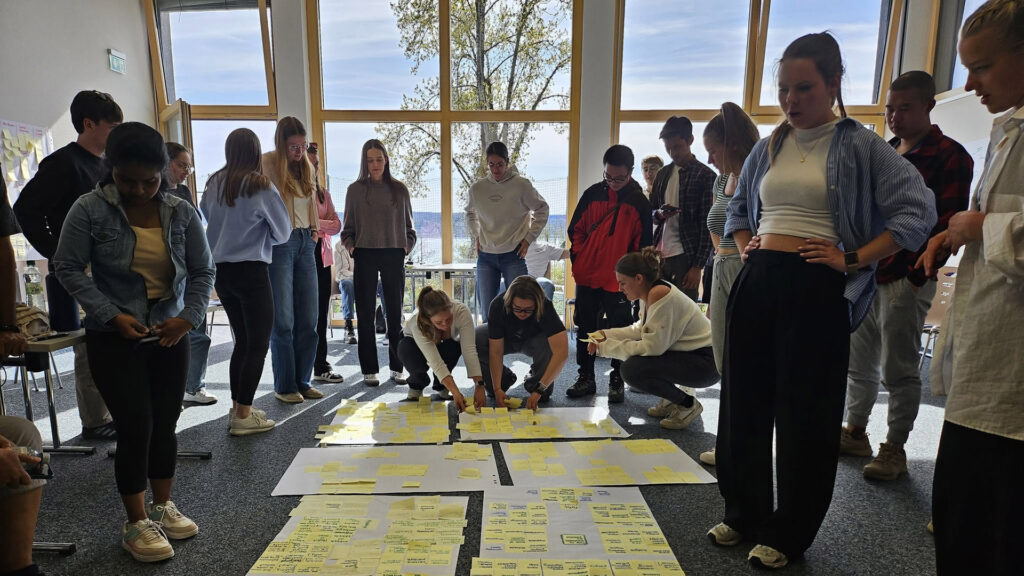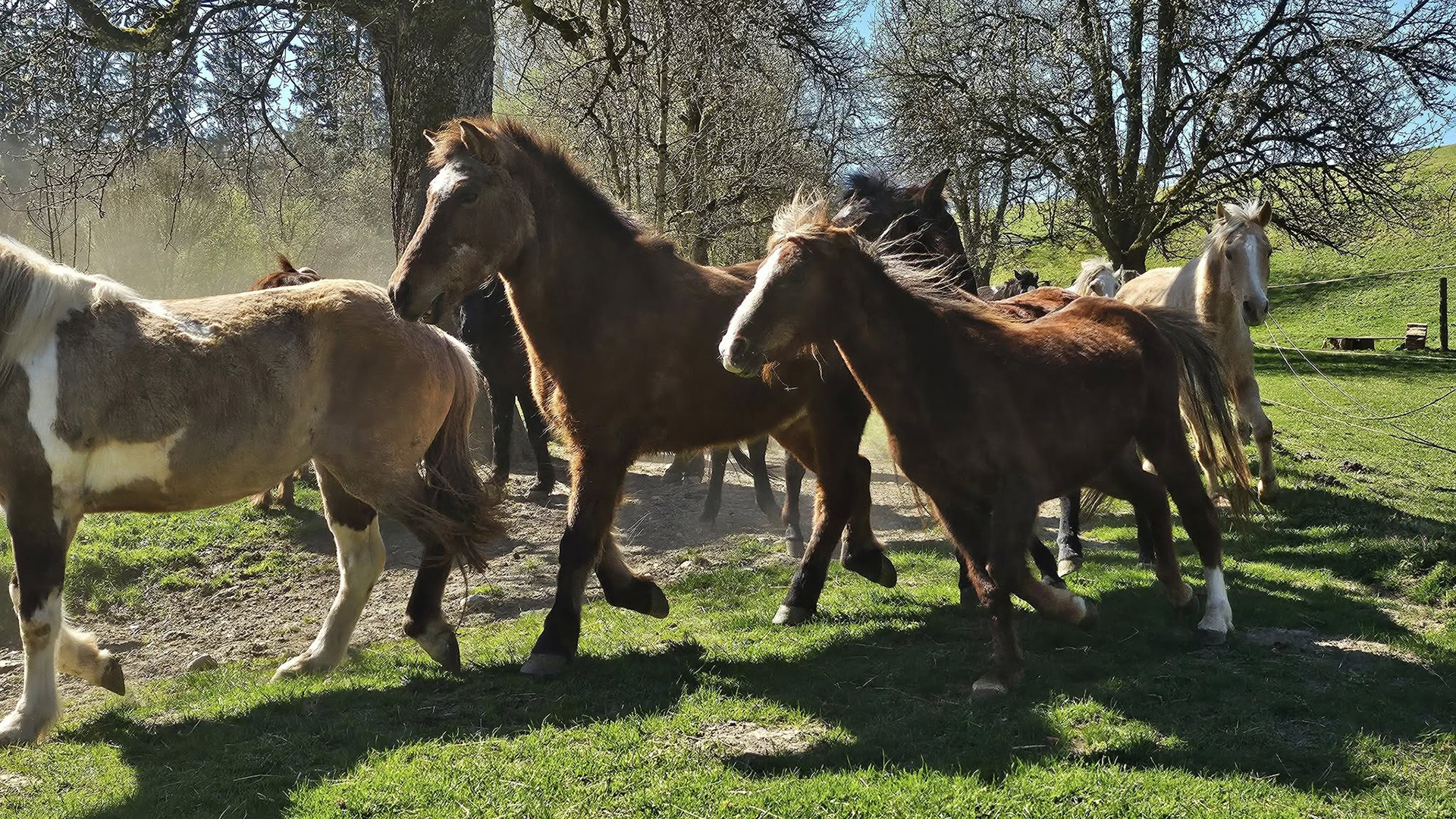In the beginning of April, ten students from Jamk University of Applied Sciences participated in an Erasmus+ Blended Intensive Programme in Southern Germany learning the Design Thinking method and creating concepts to support a local NGO. I was privileged to coach the programme and represent Jamk. I learned and experienced so much, and I am eager to share my observations with everyone. I am telling the story of this trip both from the perspectives of a Future Factory coach – as I was sent there as such, and a tourism development professional with special interest in rural destinations and regeneration (see Rural Finland Tourism Hub: Maaseutumatkailun osaamisverkosto, n.d.).
The setting: who, what, where in the Blended Intensive Programme
This Blended Intensive Programme was a continuation of an ongoing international cooperation of Jamk University Services, and the Future Factory module in particular, with other European universities. This time our host was Duale Hochschule Baden-Württemberg (Ravensburg, Germany), and the visiting schools were Jamk University of Applied Sciences (Jyväskylä, Finland) and Fontys University of Applied Sciences (Venlo, Netherlands).
The host provided us with about 20 International Business students from an intriguing degree programme where they sit on the school bench for three months and then work for a company another three months every semester (see Duale Hochschule Baden- Württemberg, n.d.). In addition, their coach was Professor Thomas Dobbelstein, an expert in marketing research. Fontys UAS was represented by two students from the fields of International Business and Informatics, however, the quality certainly compensated for the quantity. Their coach, Fabian Girod, is an expert in innovation and international matters. Jamk was represented by ten students, eight of whom were from the Tourism Management and two from the Automation and Robotics degree programme. Jamk’s team was the most diverse one, representing eight different nationalities. As their coach, I added a ninth one, and I contributed with knowledge from tourism, events, business consulting, and innovations. The programme got added value from the participation of a fourth coach, Dr. Yachal Du Plessis from Durban University of Technology, South Africa, an expert in PR and communication, who did not bring her students but was rather there to benchmark.
Our destination was Überlingen, on the shore of legendary Bodensee Lake. All students and teachers were accommodated in the same youth hostel which also became our workspace. I think this was the best decision because it did not only provide us with a stable basis for team building but it also allowed us a deeper understanding of each one’s perspective and a chance to naturally link all the developed concepts together into entirety.

The assignment came from an NGO in nearby Frickingen, the animal sanctuary Birkenweilerhof which offers home to the abandoned, unloved, ill-treated animals – horses, donkeys, goats, llamas, cats, chickens – you name it (see Pferdehof Natur und Form, n.d.). The initial objective was to help owners monetise and be able to sustain the activity. However, soon after meeting them we all realised that it is not just about making money, because the lack of time, workforce, and crucial skills prevented them from any other activity than the daily care for more than 100 animals.
New Perspective to the Design Thinking method
Needless to say, all of us coaches were united by the Design Thinking method that we wished to convey to our students as a practical means for innovation and development in working life. But I certainly did not expect how different approaches we have to this method. Within the universal phases of empathising, defining, ideating, prototyping, and testing (Doorley ym., 2018), there is a vast variety of alternative tools to choose from.
While empathising with the customer at Jamk’s Innoflash course means acquiring information first-hand by interviewing, in this programme, for structural reasons, students relied on internet research, web tool analytics, and interviewing the assignor to understand the customer. Furthermore, I had never considered using the Business Model Canvas (see Strategyzer, 2025) as a tool for defining the challenge. While the colleague from Netherlands had prepared tens of ideating tools, among others Devil’s Advocate, Opposite Thinking, Superheroes, at Jamk, we love the Lotus Blossom for ideating (see Visual Paradigm Online, n.d.), and I used it in this programme as one of our concrete contributions. On the other hand, the Morphological Analysis we used to bundle and organize ideas into initial concepts appeared to be as difficult path for this international group, as for any other I have encountered before – be it international or Finnish university students, high school pupils or even some Design Thinking rookie coaches.
The prototyping and testing in the Blended Intensive Programme were much less structured than in Jamk’s courses and resembled a full-scale piloting. In this case, this meant that students created templates for event programmes and job/volunteer applications, produced social media videos, improved assignor’s website, opened web tool and funding accounts and even delivered a full-bodied social media strategy – all this prepared in the last 1,5 days of the trip.
Regenerative power: the unsought but accomplished value everyone enjoyed
Before the trip, I was thinking: Shall I mention volunteer tourism as a trend for additional income and regeneration in farms and animal care? Can I, as a coach, put my expertise to use or would I be steering the process in the direction of my own interest in that way? Although at some point I thought that I was seeing regenerative patterns everywhere because of my own keenness, by the end of the process it was clear that we all worked on a regenerative challenge, no matter how each of us defined it.
We regenerated a place, a home, and an organization, being a special type of tourists there; we supported an organization with a purpose to regenerate, to teach responsible animal care; we also regenerated, recreated ourselves, gaining wellbeing from the interaction with animals and the abundance of nature in the rural site.
The student concepts revolved about four topics: volunteers, sponsorship, tourism and events, and social media. They all fit into the regenerative idea, a growing contemporary trend, according to which we are part of the surrounding world where everything is connected as a living organism, and it is not enough to not do harm but one should impact the places where we live and which we visit positively, by helping them thrive (see Röntynen, 2025).
The farm already works with long-term volunteers for the daily animal care activities, but students suggested utilizing the will to do good in attracting short-term volunteers for other needed tasks, like cooking or social media. Raising awareness for the real worth of animals was expressed as the vision of the owners, and it was enabled through events, visits, and educational marketing in the social media. Spreading the word and donating even without visiting the location is a regenerative activity, and dome scholars even claim that it is more responsible compared to tourism. Speaking of tours and visits, they would not require tourism expertise from owners if cooperation patterns got developed with guides and marketing organizations. Cooperation is at the core of regeneration too, as regenerative activity involves stakeholders without limits.
Students’ results were touching for the assignors but equally to us coaches. During the final presentations, there were laughs and tears mixed. The students called it meaningfulness, the owners called it help, but we all felt it – the power of doing good and regenerating the place we live in or the one we visit. It did not need any definition or any guidance – the need guided students towards the results and the satisfaction from doing good. I envision that the regenerative idea will soon grow big, as our societies are ready for the shift from barely consuming towards regenerating – and start realizing it.
All in all, the Blended Intensive Programme visit to Germany was not only successful, it was inspiring. For me it was a reminder of how much we can learn from each other and do for each other. It is an amazing tool for learning and development!
